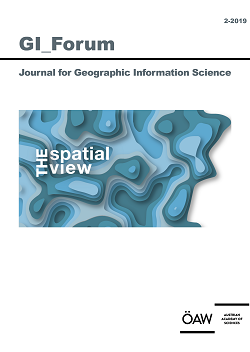Adrijana Car – Thomas Jekel – Josef Strobl – Gerald Griesebner (Eds.)
GI_Forum 2019, Volume 7, Issue 2
Journal for Geographic Information Science
Alexander Czech,
Robert Kalasek,
Florian Pühringer
S. 113 - 128
doi:
10.1553/giscience2019_02_s113
Verlag der Österreichischen Akademie der Wissenschaften
doi:
10.1553/giscience2019_02_s113
Abstract:
For many years, GIS has been a flexible tool for a wide range of spatial tasks in the spatial planning curriculum of at TU Wien. The steadily increasing number of students, the rising number of participants struggling with solving analytical problems, as well as suboptimal evaluation strategies initiated a total redesign of the course. We have rebuilt the didactic concept to better support the learning process and strengthen the understanding of learned skills, and have automated large parts of the evaluation, which allows for a more thorough assessment of quantitative results.
GIS education, blended learning, automated evaluation, spatial analytics
Published Online:
2019/12/11 14:22:15
Object Identifier:
0xc1aa5576 0x003b1787
Rights:https://creativecommons.org/licenses/by-nd/4.0/
GI_Forum publishes high quality original research across the transdisciplinary field of Geographic Information Science (GIScience). The journal provides a platform for dialogue among GI-Scientists and educators, technologists and critical thinkers in an ongoing effort to advance the field and ultimately contribute to the creation of an informed GISociety. Submissions concentrate on innovation in education, science, methodology and technologies in the spatial domain and their role towards a more just, ethical and sustainable science and society. GI_Forum implements the policy of open access publication after a double-blind peer review process through a highly international team of seasoned scientists for quality assurance. Special emphasis is put on actively supporting young scientists through formative reviews of their submissions. Only English language contributions are published.
Starting 2016, GI_Forum publishes two issues a Year.
Joumal Information is available at: GI-Forum
GI_Forum is listed on the Directory of Open Access Journals (DOAJ)




 Home
Home Print
Print
 References
References
 Share
Share
